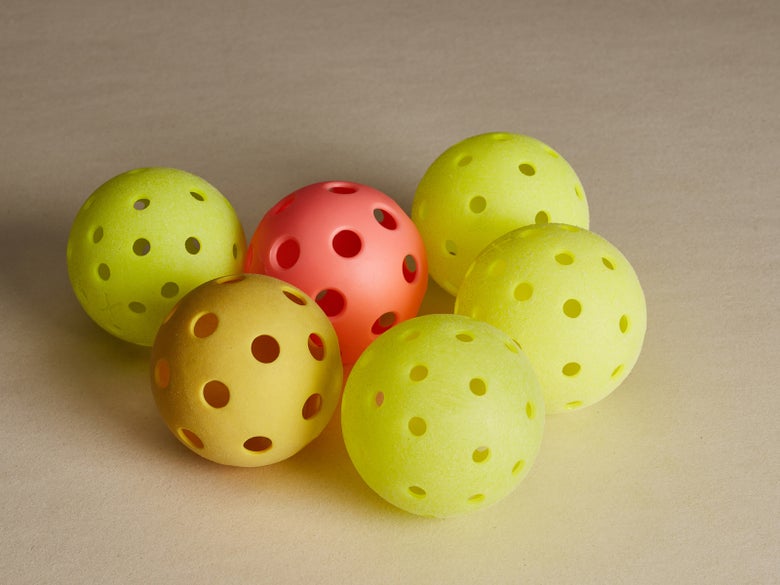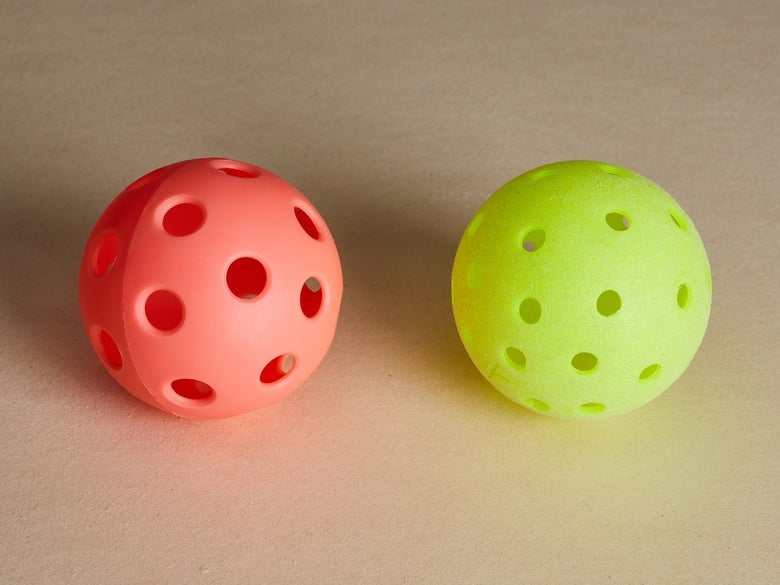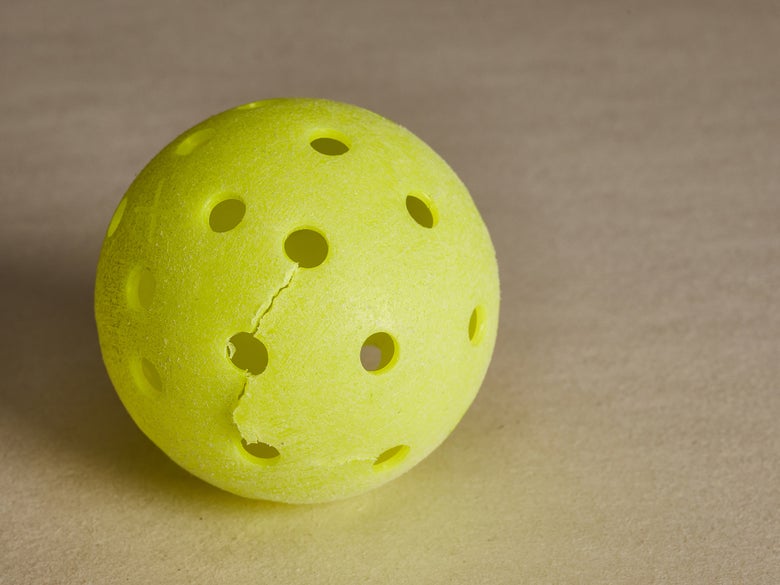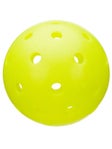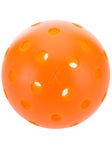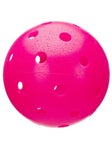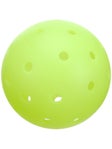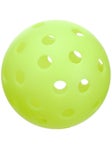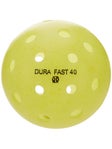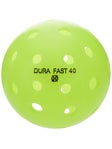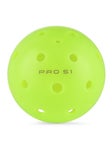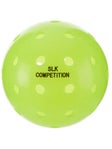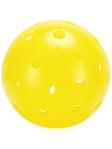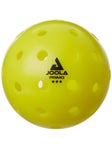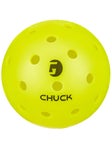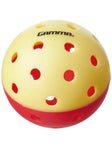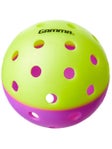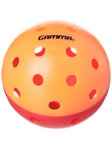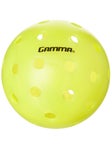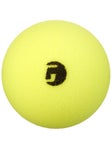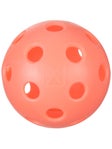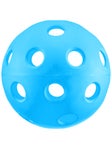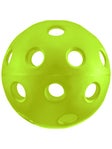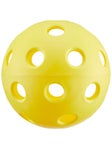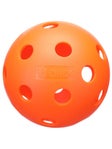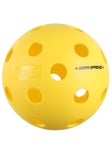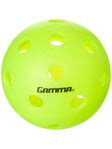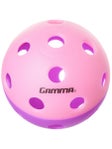How to Choose the Right Pickleballs: Indoor vs. Outdoor Pickleballs
We explain the difference between the two kinds of pickleballs and why the ball you choose matters.
Are you playing your pickleball on the same court surface and looking for the one that you and your friends like the best? Or do you split time between both wood laminate (indoor) and hard courts (outdoor) and need some details on what to expect in terms of playing with a particular pickleball? We can help!
Indoor vs Outdoor Ball: How Do You Tell the Difference?
At a glance, indoor and outdoor pickleballs look more alike than not. However, even before playing with them, if you compare both ball types tactically, you will detect some noticeable differences. Although the variations are slight, there are primarily five distinguishing traits between the indoor and outdoor balls: Weight, number of holes, hole diameter, hardness and durability. Looking at the image above, the indoor ball is on the left and outdoor ball on the right.
Ball Comparison Chart
| Ball Type | Indoor | Outdoor |
| Weight | 22.11 g (.78 oz.) | 25.5 g (.90 oz.) |
| Material | Softer Plastic | Firmer Plastic |
| Holes | 26 Larger Holes (average) | 40 Smaller Holes (average) |
| Size of Holes | 2.874-2.897" (7.30-7.36 cm) | 2.897-2.972" (7.36-7.35 cm) |
| Aerodynamic Drag | Higher Drag Lower Ball Speed |
Lower Drag Higher Ball Speed |
| Control + Spin Potential | Easier to Control and Manipulate with Spin | More Challenging to Control, and Manipulate with Spin |
| Durability | More Durable | Less Durable Tend to Crack and/or Warp |
| Average Rally Length | Longer | Shorter |
| Noise | Quieter | Typically louder |
Weight
Like a rolling heavier bowling ball, heavier pickleballs fly straighter and more predictably. Because they are typically heavier, outdoor balls will also feel more stable (less twitchy in flight). A lighter (usually indoor) ball may at first feel like it is catering to lively and faster play. This is because the lighter ball attains terminal velocity quicker off the paddle, but it slows down sooner than does a heavier pickleball. There is no set weight for either ball type, but 0.8 to 0.9 ounces (21-26 grams) seems to be middle ground for both indoor and outdoor.
Number of Holes
There are fewer holes drilled (around 26 beveled holes) in an indoor ball. The drill holes of an indoor ball are bigger, which allows for increased air flow through the pickleball, decreasing ball speed and slowing down play. This construction also contributes to a softer feel, and in a way makes an indoor ball easier to control. On the contrary, outdoor pickleballs have more holes (typically 40) that are a bit smaller, which makes the balls more aerodynamic which leads to faster play and often shorter rallies.
Drill Hole Diameter
Manufacturers of pickleballs play around with the size of holes, but in general, an indoor ball will feature larger holes. Due to there being far less wind on an indoor court, the larger holes benefit the predictability of indoor play. On average, an indoor ball's hole diameter is 0.43 inches compared to the 0.282-inch hole diameter for the outdoor variety.
Pickleball Hardness
Pickleballs (indoor or outdoor) are designed and constructed to withstand the high-impact nature of the sport. Indoor varieties feature a softer plastic compound, and an outdoor ball utilizes a firmer, and smoother type of plastic. Regardless of whether the ball is purposed for indoor or outdoor, to get an official USAPA approval, the ball should have a firmness rating between 40 and 50 at 70 degrees F¡ (plus or minus 5 degrees) on the Durometer D hardness scale.
Pickleball Durability
All pickleballs have a lifespan in terms of maintaining a consistent bounce, shape along with being resistant to breakage. In addition, all pickleballs, perform a bit differently and break down in a few ways.
Obviously, if a ball cracks, it is time to reach for another new ball. However, indoor balls are made with a softer plastic compound, so they do not always crack. We notice many indoor balls lose some of their original liveliness but are playable for a longer period of time than an outdoor ball. Eventually the indoor ball becomes increasingly soft, and mis-shaped. New ball please!
Sometimes the cracks are obvious in the pickleball, as shown above. However, most outdoor pickleballs develop a small crack, extending out from one drill hole after several games. Usually a couple of points occur where both teams question the bounce of the ball, which precipitates the inspection of the ball and is followed by the "aha" moment, along with the request for a new ball. The broken ball will often display hairline cracks, as shown below.
Lastly, plastics are affected by fluctuations of air temperature. The colder the climate you play in, the more brittle a pickleball will become and will be more likely to crack sooner than in warmer climates.
Other Notable Traits and Requirements for Pickleballs
To garner USAPA approval for a pickleball, the ball must have:
- 26-40 drill holes
- One uniform color
- Register between 40-50 on the Durometer D scale of firmness, while tested at a temperature of 70¡ F (plus or minus 5¡ F)
- Exhibit a bounce of 30-34 inches when dropped from a height of 78 inches at the same ambient temperature of 70¡ F (plus or minus 5¡ F)
Popular Pickleball Brands
Indoor Pickleballs
In Conclusion
Even though one pickleball will noticeably fly, feel and sound slightly different than another, overall, all outdoor and indoor pickleballs perform more alike than not. On the topic of sound, or decibel level, if some courts you play on are in proximity to residential areas, and sound is a factor, we advocate using a ball that produces less of an acoustic footprint. Ultimately the best way to narrow down which balls you prefer is to play with every ball available to you.
With an ever-expanding menu of pickleballs to choose from, it can be tricky deciphering the small, yet obvious variations in their performance. To better help customer/players know what to expect, in terms of playing with a particular ball, and also to promote internal fun and competition here at work, our playtesters and extensive, company-wide collection of die-hard players use and provide feedback on all of the pickleballs that are featured on the Total Pickleball site.
